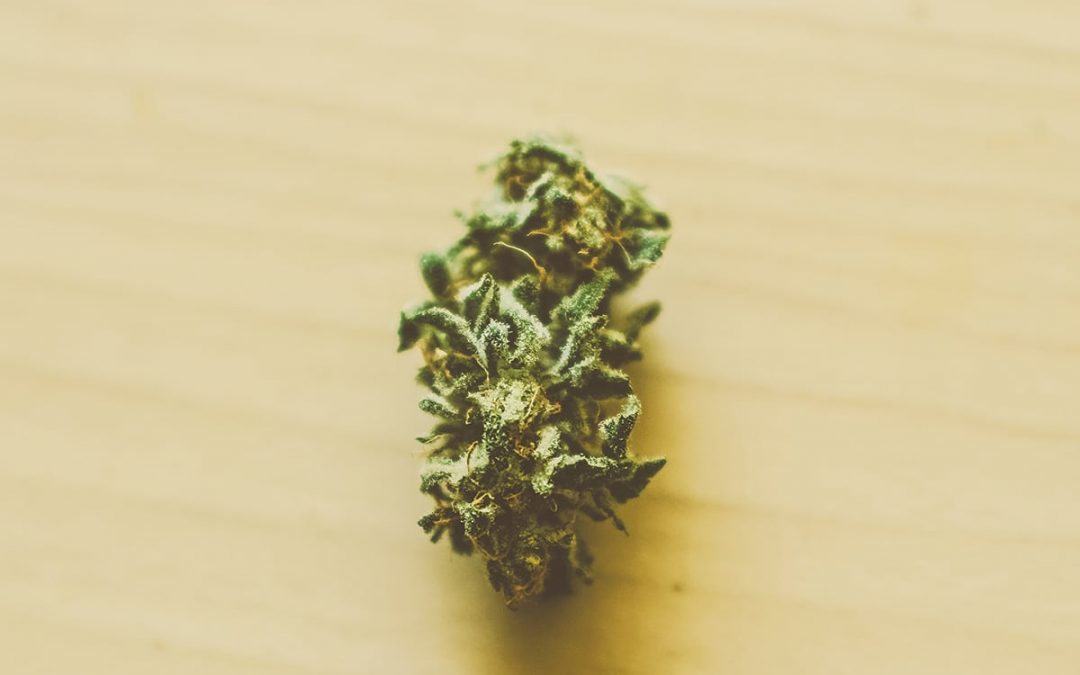While most people are familiar with the cannabinoids THC and CBD, hemp and cannabis plants hold a bountiful bevy of other potentially beneficial compounds that are considered lesser-known cannabinoids. Researchers have isolated more than 100 cannabinoids from the plants, and many are being used in products along with CBD and THC. We take a look at some of the cannabinoids getting more recognition as of late.
Cannabigerol (aka CBG)
Cannabigerol, or CBG, is non-hallucinogenic, similar to CBD. In nature, CBG is present early in the plant’s development, but not much is present in the mature plant. However, breeders can cultivate high-CBG strains, like Mickey Kush, for example. Early CBG research is showing the compound has antibacterial properties, and that it may stimulate bone growth and brain cells, be an appetite stimulant, and could even suppress cancer cell growth. CBG also shows promise as a pain and inflammation fighter. Researchers have measured CBG’s ability to reduce chemicals produced by inflammation, such as interleukins and tissue necrosis factor, and found that the compound has potential.
Research suggests that CBG is an antioxidant that deals with inflammation by reducing oxidative stress, which is the imbalance between free radicals and antioxidants in the body. Oxidative stress causes nerves to degenerate, with eventual loss of the nerve cells. Studies have shown that CBG can inhibit a process called apoptosis or cell death. This process happens when the cell detects toxic states. CBG binds to both CB1 and CB2 endocannabinoid receptors, meaning it can work in multiple ways to help the body maintain the chemically-balanced state called homeostasis. CBG seems to interact with specific CB1 and CB2 target receptors, both of which are involved in cancer cell growth. Specifically, CBG seems to stop the chemical cascade that stimulates cancer growth, particularly in colorectal cancer.
Animal studies showed that CBG may stimulate appetite and therefore be effective against the severe nausea typically caused by cancer chemotherapy treatments. This would prove to be a breakthrough treatment for cachexia, the muscle wasting that often occurs with chemotherapy. THC-based compounds have been used for many years to increase appetite, but THC is also psychoactive, and many cancer patients do not like that aspect, so CBG may be a game-changer in this realm.
Tetrahydrocannabinolic Acid (aka THCA)
CBG is found in very small amounts in mature non-cultivar plants, but it’s important because it generates three other lesser cannabinoids: tetrahydrocannabinolic acid (THCA), cannabidiolic acid (CBDA), and cannabichromenic acid (CBCA). Different enzymes interact with CBG and heat or ultraviolet (UV) light to create these three compounds.
Of the three, THCA is usually found in the highest concentration in cannabis flower. THCA is not hallucinogenic, but it is decarboxylated to form THC, which is. THCA has also been found to reduce nausea, sometimes even more effectively than THC. THCA may synergistically combine with other cannabinoids to increase effectiveness against inflammation, also known as the entourage effect.
Cannabidiolic Acid (aka CBDA)
CBDA is an antimicrobial compound. Like THCA, it also interacts with COX2 to reduce inflammation. A 2008 study compared CBDA with nonsteroidal anti-inflammatory drugs commonly used to treat inflammation. Their chemical structures were remarkably similar. CBDA is non-hallucinogenic. When heated, it decarboxylates into CBD.
CBDA has been studied for a little more than a decade. Early research shows CBDA may affect serotonin levels. Serotonin is a core neurotransmitter substance that plays a key role in most human functions like sleeping, digestion, motor skills, and regulation of emotions. Stressors trigger the body to release excess serotonin. Research shows that CBDA has an effect on the body’s 5-HT serotonin-producing receptors, with one study showing that CBDA has 100 times greater affinity for the 5-HT receptors than CBD. CBDA also has greater bioavailability than other cannabinoids, meaning the body can metabolize the compound in less time and with less effort. Because CBDA acts on the 5-HT receptors in a similar fashion to selective serotonin reuptake inhibitors, the cannabinoid shows promise as an antidepressant.
British company GW Pharmaceuticals is the maker of Epidiolex, the first plant-based CBD-derived drug approved by the US Food and Drug Administration (FDA). The FDA required the company to do research on the precursor CBDA, as well as CBD. Company testing results show that CBDA may be even better as a seizure treatment than CBD. GW Pharmaceuticals has filed many other patents on CBDA, such as one for inflammatory skin diseases and one for cancer treatment. Most recently, the company filed a patent on novel intravenous formulations of CBDA and other cannabinoids.
Cannabichromenic Acid (aka CBCA)
Cannabichromenic acid (CBCA) is best known as the precursor to cannabichromene (CBC), discussed below. Although CBCA was first isolated in the 1960s, it hasn’t received much attention until recently. Findings on THCA and CBDA are now driving more CBCA research. CBCA possesses many of the same qualities as CBC, so it is being investigated as an anti-inflammatory agent, and even as an antibacterial agent to treat Methicillin-Resistant Staphylococcus aureus infections.
Cannabinol (aka CBN)
THCA carboxylates into THC, which can then oxidize into cannabinol (CBN). There are no high-CBN strains, rather CBN is usually present in higher amounts in older cannabis that is exposed to oxygen. Older cannabis is also higher in sedating terpenes, and more research is needed to determine whether CBN is also a sedative by itself or whether the entourage effect is at play with other cannabinoids and terpenes to promote sleepiness.
Some research has shown CBN may act in conjunction with THC. In fact, CBN was the first cannabinoid to be isolated by researchers before 1900. These researchers initially credited CBN with the cannabis “high” but later realized THC created the effect.
CBN is also very similar in chemical structure to CBD, so it has many of the same anti-inflammatory and pain-relieving qualities. CBN is an antibacterial, and has been studied as a possible suppressant against oral pathogens that cause gum disease. Research is also being done to look at CBN for possible pain relief as it has similar properties to capsaicin, the chili pepper derivative and nerve desensitizer found in so many topical creams.
Cannabichromene (CBC)
Cannabichromene, or CBC, is derived from the precursor CBGA, as are THC and CBD. CBC is not a well-known cannabinoid, but it may have therapeutic and neuroprotective benefits.
This minor cannabinoid is showing great promise as an anti-seizure medication, just like the above-mentioned Epidiolex, for treating the rare disorder known as Dravet syndrome. CBC may also promote bone growth and help reduce pain and inflammation. The compound has been studied as a migraine treatment. It may also be an effective cancer treatment because it interacts with anandamide, one of the body’s natural endocannabinoids, to inhibit tumor growth, particularly breast cancer. Interestingly, researchers have shown CBC keeps anandamide circulating in the bloodstream longer, thus maximizing its effect on the tumor. There are higher-CBC strains, such as 3 Kings or Birthday Cake.
Although research has gleaned a lot of important information about the lesser known cannabinoids in recent decades, there’s still a great deal to be learned through ongoing research. But many brands are already starting to list them in their products, typically alongside CBD and THC. We will likely see more and more of this as the industry and the research grow.
Photography by Matt Ferro

Jacqueline Havelka
Jacqueline Havelka is a rocket scientist turned writer. She is a biomedical engineer trained at Texas A&M University and worked as a NASA Johnson Space Center aerospace contractor in her first 25-year career, where she managed space life sciences experiments and data for the International Space Station & Space Shuttle. In 2017, she founded her own company, Inform Scientific, to provide medical and technical freelance writing from the shortest blog article to the longest NIH grant to obtain funding. She particularly enjoys writing about naturopathic and homeopathic medicine, an all-too-forgotten ancient art form in today's modern world of pharmaceuticals. Jacqueline always had the desire to start her own business, and she loves the challenge and diversity of international projects that her business brings. She learns something new every single day, and that is a very good thing.
